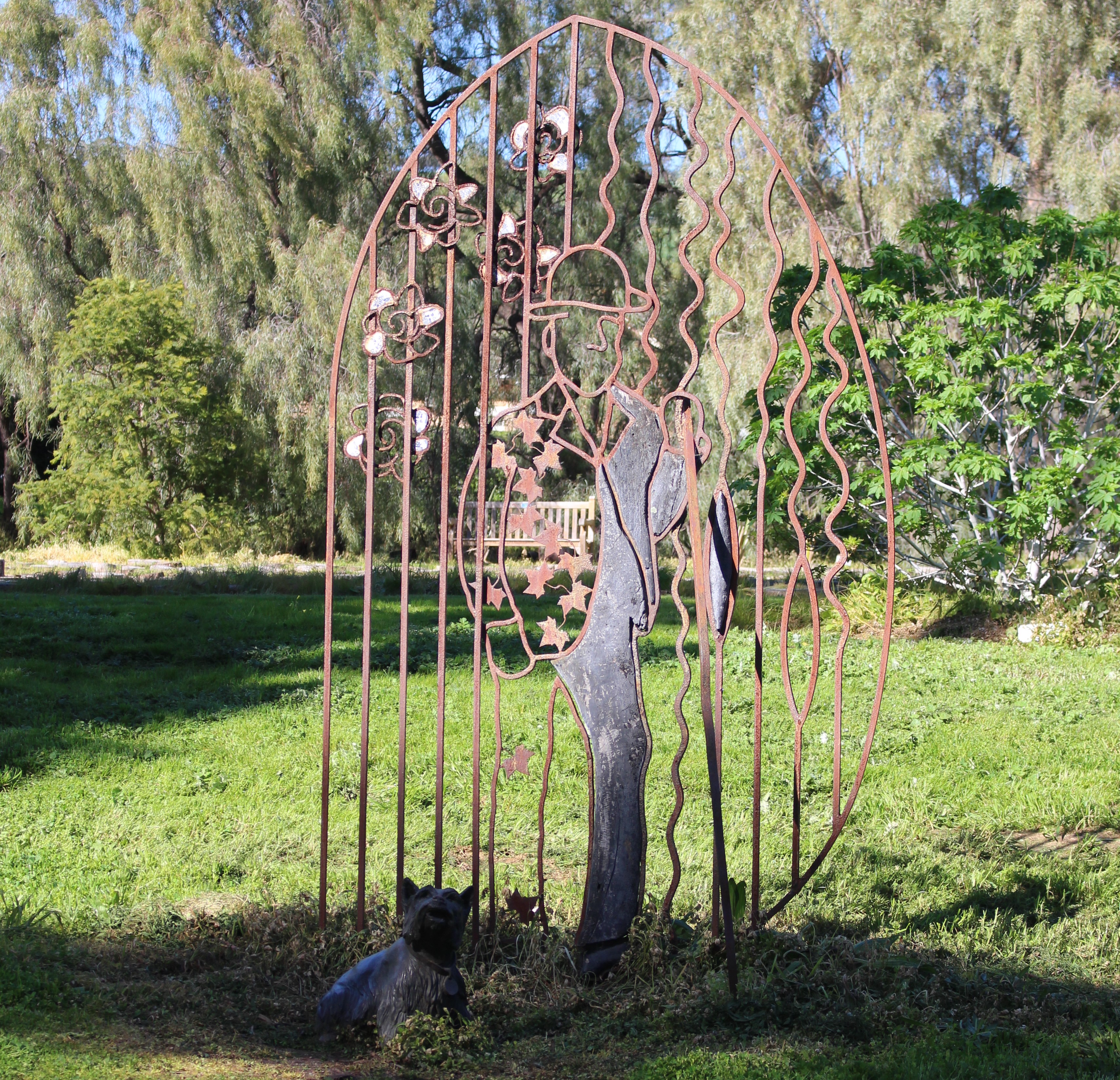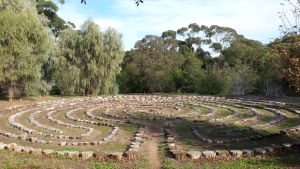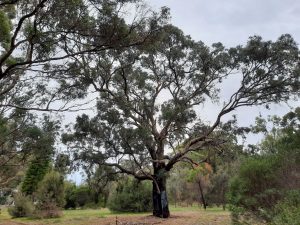About the Arboretum
- LABYRINTH: Labyrinth
- i-TREE ECO: i-Tree Eco
- PLANT COLLECTIONS: Plant Collections
- TREES: Buds – flowers – fruit – bark and – … https://friendsofwaitearboretum.org/trees-buds-flowe…-leaves-bark-and/
- RESEARCH, CONSERVATION and BIODIVERSITY: https://friendsofwaitearboretum.org/about-the-arboretum/research/
- HISTORY: https://friendsofwaitearboretum.org/history/

Peter Waite and his dog Shrimp

Shrimp Waite

Waite Arboretum Labyrinth installed in 2010. In 2022 the labyrinth timber rounds were removed. The labyrinth will be rebuilt using more durable materials.

One of a number of wildlife families in the Arboretum
#1216 Eucalyptus microcarpa Grey Box MYRTACEAE (original tree), SA, Vic., NSW, Qld.
An Arboretum is "a reference collection of trees and shrubs cultivated for scientific, horticultural and educational purposes. Specimens are usually arranged according to a scheme e.g. it may be systematic relationship, or country of origin, or perhaps commercial use. Aboreta differ from botanical gardens in that there are no herbaceous plants and aesthetic effects take secondary consideration" (Gardner G. 1990, p.1).
The Waite Arboretum was established in 1928 by a bequest to the University of Adelaide by Peter Waite,
A prominent pastoralist and businessman, He stipulated that the 27 hectares (occupied by the Arboretum) was to be a public space in perpetuity. The University of Adelaide choose to create an Arboretum. The purposes of the Arboretum are experimental i.e. to demonstrate and evaluate the suitability of a wide range of trees to the local environment. Many of the trees are grown without extra watering and provide a valuable resource for teaching, research and propagation and to provide an attractive and informative area for passive recreation.
Objectives of the Waite Aboretum
- Experimental:
- Research and vegetative propagation:
- Educational:
- A passive recreational park (Gardner, 1990, pp.3-4)
The Arboretum contains a number of special collections including one of the most comprehensive and well-documented collections of eucalyptus. Other special collections including dragon trees, palms and cycads pears, oaks and more.
VISIT THE COLLECTIONS by walking the Arboretum or via the Waite Arboretum App https://friendsofwaitearboretum.org/features/arboretum-app/
Growth of plantings:
- In 1928 the first planting began and by 1930 1,020 trees had been planted representing 367 species in 180 genera and 67 families.
- In 1990 there was 1,560 trees representing 770 species in 202 genera.
- In 2020 there are over 2,300 trees representing 850 species.
Areas – Sections
- North Arboretum: Corner of Cross Road and Fullarton Road.
- West Arboretum: East of Fullarton Road.
- East Arboretum: East of Elm Avenue.
- South Arboretum: Along Claremont Avenue from the east boundry of Waite Sports Grounds to the labyrinth.
Visiting the Arboretum: The Aboretum is open to the public daily from dawn to dusk except for CFS declared days of Total Fire Ban and extreme weather events.
- No dogs, cats and or pets are allowed in the Arboretum except for registered guide and assistance dogs, as permitted under the relevant Act. In all other areas of the University of Adelaide's Waite Campus dogs must be on a lead. The Arboretum is home to native wildlife including kangaroos, koalas, ducks, echidnas, birds and lizards.
- Peoples' pets such as dogs and cats can harm the wildlife by diseases and viruses that they may carry, their smell and sighting of dogs and cats by native animals can cause distress to the wildlife and cause animals to leave their homes causing young birds and ducklings especially to be abandoned by their stressed parents.
- PROTECT YOUR PET: Dogs and cats are at serious risk to their own health and safety in the Arboretum. For example: kangaroos can threaten dogs with their sharp claws; snakes, foxes and raptors are a threat to both dogs and cats. Ticks are also a danger to your pets. Ground flora are the ideal places for ticks to hide and can easily sneak into your dog and cat's fur. Paralysis ticks can be fatal.
ENJOY THE ARBORETUM – LOOK AFTER YOUR PETS
